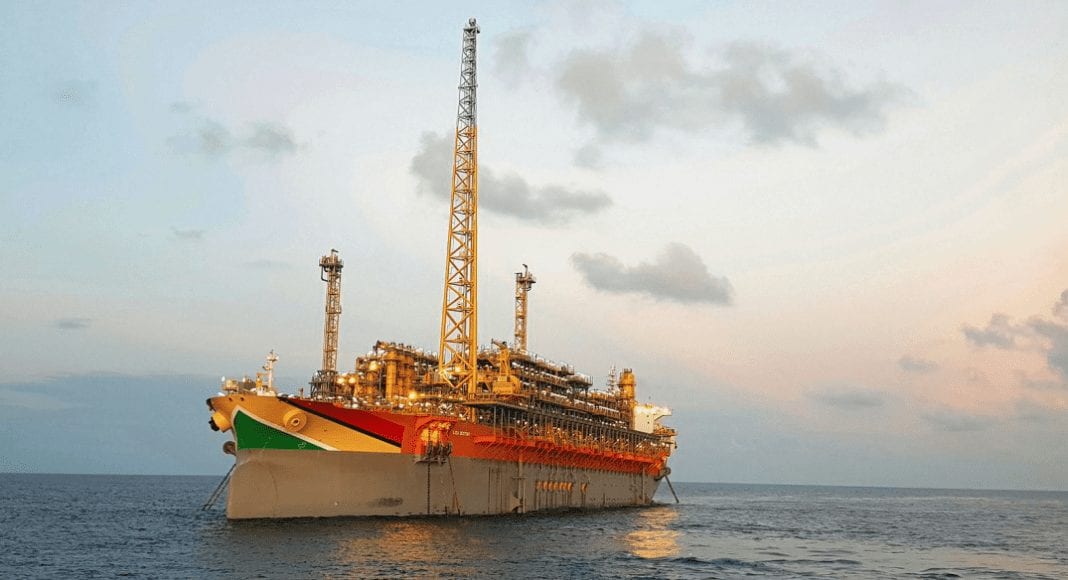Using a model of five developments being underway by 2025 offshore Guyana targeting an estimated 750,000 barrels of oil per day, the Inter-American Development Bank (IDB) says considering the sequencing of the projects, Guyana would ultimately accumulate around US$49 billion by 2054 in oil revenue.
The model assumes that each project will have a production life of 20 years with a two-year decommissioning period. To meet forecasted production levels in 2025, the model assumes the two additional projects set to follow Liza Phase 1, 2 and Payara, should share similar production profiles to Liza Phase 1, at 120,000 boe/day. Liza Phase 2 and Payara are targeting 220,000 boe/day.
“Considering the sequencing of the targeted five projects by 2025 by the Stabroek operators, the expected windfall by the government progressively increases,” the IDB said in its report – Traversing a Slippery Slope: Guyana’s Oil Opportunity, by analysts Lenin H. Balza, Emily Brearley, Dillon Clarke, and Victor Gauto.
The report says while convention has tempered the relevance of forecasting over a protracted horizon and the notion that too many variables, both endogenous and exogenous, may be subject to change; “Guyana as a new oil-producing country – despite debates about the ”best deal” – is poised to drastically transform over the near and medium term.”
This exercise, the IDB report stated, excludes the likely commissioning of other projects beyond the 2025 horizon for the Stabroek license area, as well as the development activities that may manifest into production from the other license areas.
Over 8 billion barrels of oil equivalent have been found at the Stabroek block with multiple exploration targets remaining and other prospects being drilled outside the block.
According to the IDB document, while the likelihood of adjustments to initial contract terms are probable, any improvement in Guyana’s government take for all its active petroleum agreements will translate to greater windfalls to the country and further accelerate the transformative impact of responsibly managed hydrocarbon extraction.
Considering the astounding wealth coming its way, the report said it is understood why there is a drive for Guyanese policy makers to undertake the necessary internal analyses to determine whether the current Production Sharing Agreements are adequately reflective of the country’s position as one of the newest and largest oil plays in Latin America and the Caribbean. But regardless of contract quality, the report categorically states that avoiding (further) value leakages from inefficient institutional organizational organisation and regulatory oversight as a nascent oil-producing country, should be of high priority.
“The planned production sequencing of crude production of approximately 750,000 boe/day in 2025[6], will make Guyana the fifth largest oil-producing country in Latin America and the Caribbean,” the IDB report said.
The model used for the report does not include gas, given the expected use to improve crude recovery in current fields and new projects, and also, the potential for the development of gas-to-shore facilities and associated industries.



